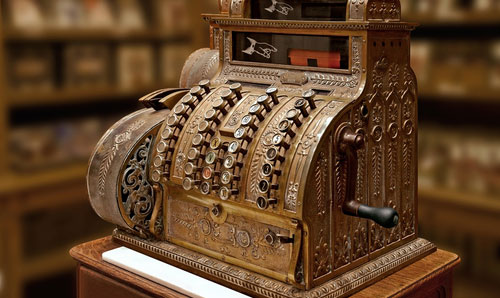Sherlock Holmes, Energy Detective (part 1)
Updated 5 February 2017
The envelope arrived in the morning post, for "Mr. Sherlock Holmes, 221B Baker Street". It bore no return address.
"A bit odd," I remarked, "I assume the contents will reveal the sender's identity."
"Let us find out, Watson." Holmes slit the envelope open and removed two pieces of paper and a thumb drive. One of the papers was a letter, which Holmes quickly read.
"This explains the anonymity. What do you make of it, Watson?" Holmes handed me the letter.
Dear Mr. Holmes,
I am the co-owner of a modest but thriving business. My partner and I have worked long hours over the past few years to achieve some level of success. We see eye-to-eye on most business matters, but we now differ on an important issue, which is why I seek your assistance.
We've applied for a bank loan to expand our operations. The branch manager has advised us to reduce our expenses to improve our chances of approval. One of our highest costs is the electricity bill, but my partner insists there is no room for improvement there. He is of the opinion that "we run a tight ship" and will not countenance the thought of an energy audit.
I seek information that will open his eyes to the possibility that we can lower that bill. But I dare not bring a consultant to our premises without his acquiescence. I have been told that you can work wonders with only the smallest amount of information. Towards that end, I enclose an electronic record of our business' electricity consumption for the past year. But all identifying information has been removed, so I feel I am not betraying my partner's trust.
The letter concluded with a post office address for delivery of any findings. And the second piece of paper was a cashier's check for "services to be rendered".
"This is absurd, Holmes, even you cannot conduct a proper energy audit without stepping foot on the premises. We know nothing about the facility, its size, type of operations, equipment, nothing!"
"Quite right, but notice our prospective client is not asking for specific recommendations. He or she is looking for evidence that their facility is not behaving as optimally as the partner believes. And I can interrogate the one expert who knows the most about their current energy patterns." Holmes held up the thumb drive - "their electric meter."
Strange bumps in the night (and weekends)
 Holmes flipped open his laptop and inserted the thumb drive. "Hmm, just as I expected. This contains a year of electricity use, in 15 minute increments. Undoubtedly obtained from their utility, I recognize the format. But as stated in the letter, all identifying information has been removed."
Holmes flipped open his laptop and inserted the thumb drive. "Hmm, just as I expected. This contains a year of electricity use, in 15 minute increments. Undoubtedly obtained from their utility, I recognize the format. But as stated in the letter, all identifying information has been removed."
I glanced over Holmes' shoulder at the screen. "There must be thousands of numbers here. What can you possibly pick out in that haystack?"
"Over 35,000 readings, to be precise. I shall now employ analytical reasoning to them, thereby turning data into information. Watson, prepare to be amazed!"
More than once during my years in Baker Street I observed a small vanity that underlay Holmes' didactic manner. I made no remark, however.
"First we will determine if there are similarities by day of week." His fingers flew over the keyboard as he spoke. "For example, do Mondays behave like Tuesdays or any other day? Which days have the highest energy use and demand? Are there common hourly patterns when energy use rises or falls? Ah, here is something of interest."
I pulled up a chair along side Holmes to better see the following chart.
"The business appears to have a standard weekday vs. weekend pattern. The green area uses data for the entire year to show the range in which the client's electricity use usually falls. The black line shows the actual use for a typical week. Mondays through Fridays are substantially higher than Saturdays and Sundays."
"Looks quite normal to me," I commented.
"A careful examination of the weekdays reveals that electricity use wakes up about 6am but does not drop back down until after 11pm. That is a very long work day. I suspect that some equipment is not turned off when the last occupant leaves for the day. Watson, would you be so kind as to hand me the client's envelope."
"Certainly, here you are. But it's empty."
"There may not be a return address, but there is a post mark. This one is a bit smudged, but I can just make out the postal code." Holmes entered something on the laptop. "This was mailed from a small town in western Massachusetts, in the United States. I can access the U.S. Energy Information Administration database of retail electricity prices, and retrieve the prices for commercial customers in Massachusetts for the months covering our client's data. Applying those prices to this energy profile, we can estimate that if equipment can be turned off even one hour earlier each weekday, the annual savings would be about $7,000."
 "Furthermore," Holmes continued, "look at that small bump on Saturdays and Sundays, which starts around 8am and lasts 12 hours. That occurs on 90% of weekend days. If this establishment is closed on weekends, it may be possible to eliminate that bump, saving about $6,000 per year."
"Furthermore," Holmes continued, "look at that small bump on Saturdays and Sundays, which starts around 8am and lasts 12 hours. That occurs on 90% of weekend days. If this establishment is closed on weekends, it may be possible to eliminate that bump, saving about $6,000 per year."
"Gracious, that's $13,000 in potential annual savings. That should impress the bank manager!"
"We have just begun, Dr. Watson."
That which never dies
"Observation and deduction. We observe that our client's electricity use on Saturdays and Sundays is usually lower than on weekdays. We further observe that electricity use is at its lowest very early in the morning, between 2-3am. So we deduce that whatever equipment is turned off each night has been turned off by that hour, and most of the remaining demand is from equipment which is running continuously, 24 hours per day, 7 days a week."
"Surely that cannot amount to much. Maybe some security lighting, a few clocks and other small things that glow in the dark."
"Would you be surprised, Watson, if I told you that this 24x7 equipment accounts for almost 40% of our client's total electricity use, as shown in blue here."
"That hardly seems possible! Surely not all of this equipment needs continuous operation."
"Probably not, only an on-site audit can pinpoint the culprits. But in my experience, one can easily achieve a 10% reduction in this 24x7 demand. If this holds for our client, that would be another $17,000 in annual savings."
"Astounding! Your analytical reasoning has so far identified $30,000 in possible savings. Have you exhausted the proverbial low hanging fruit?"
"Perhaps, we shall see. The next steps require more sophisticated techniques of detection. The chase is on!"
© Copyright 2025 ENERGYai®









